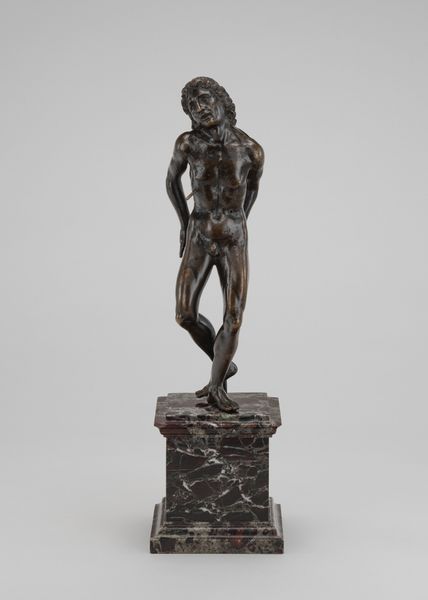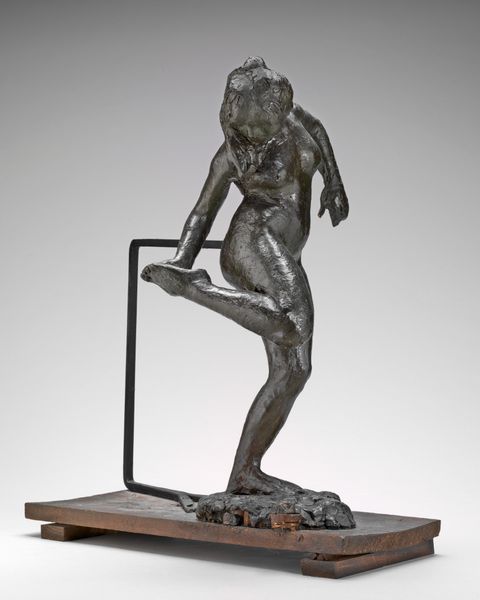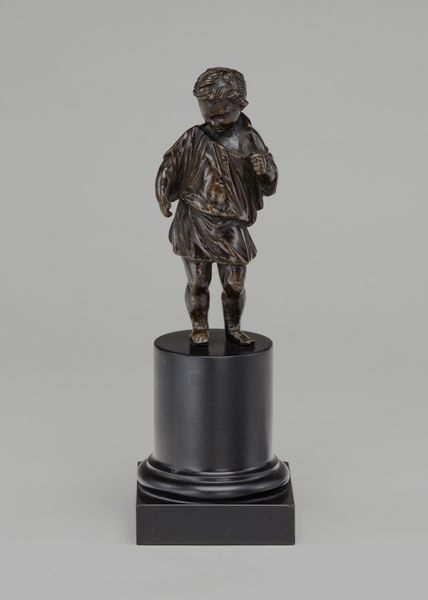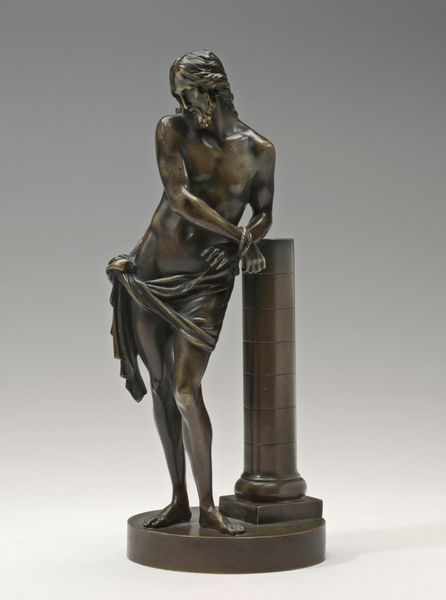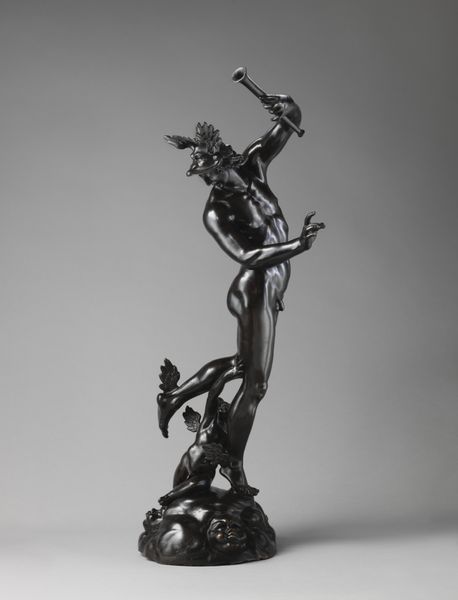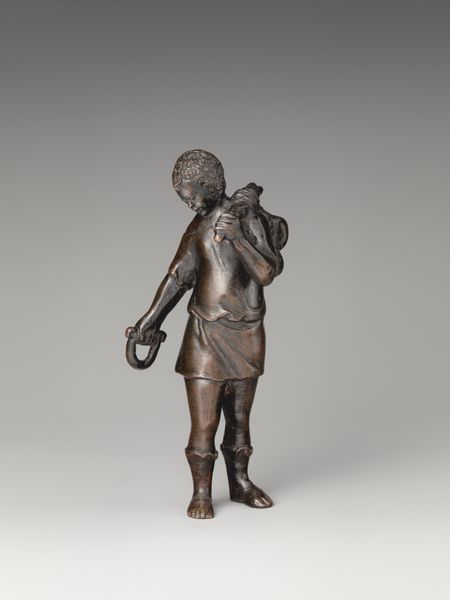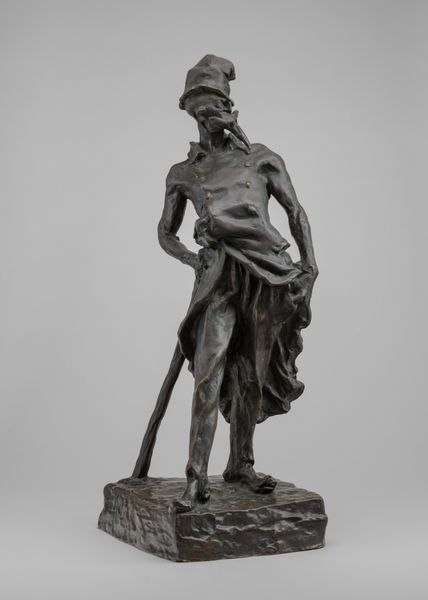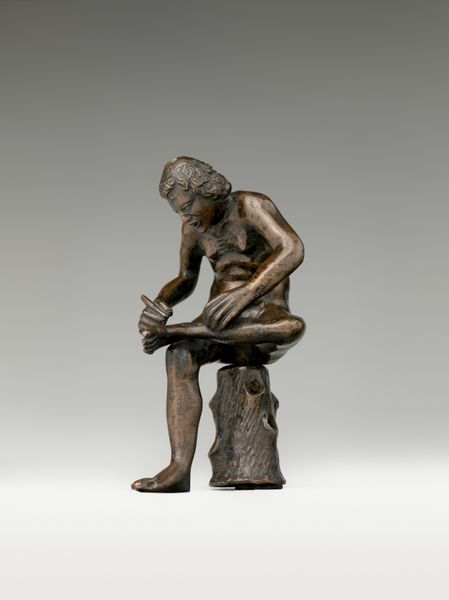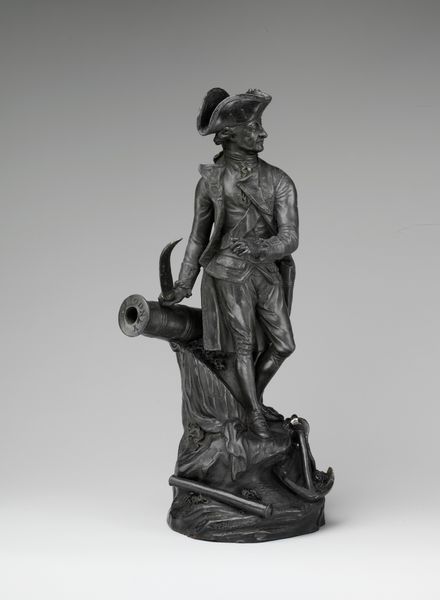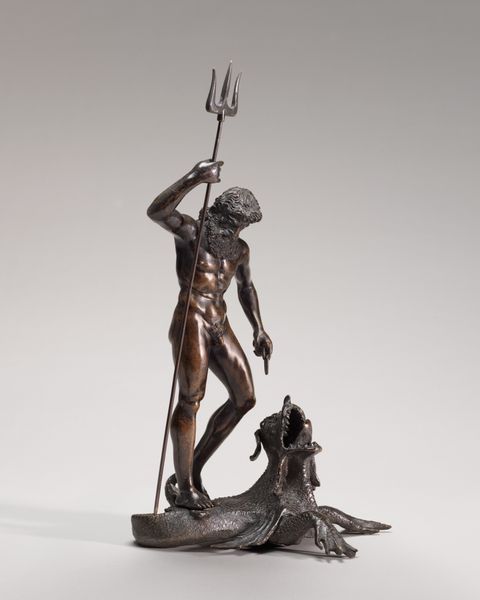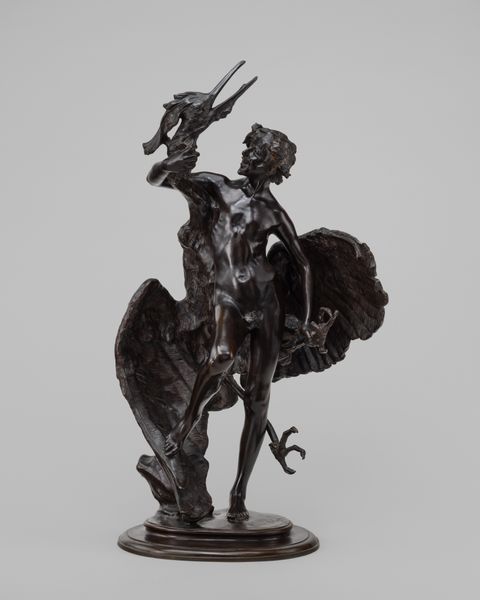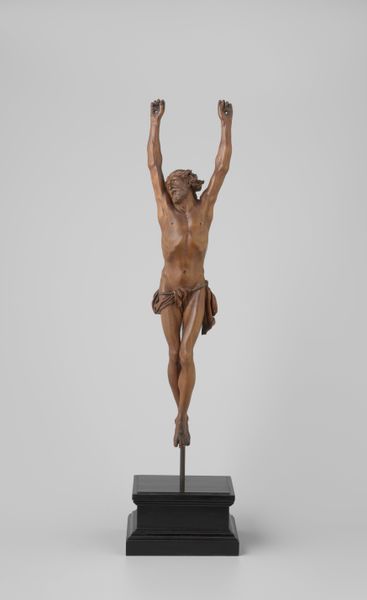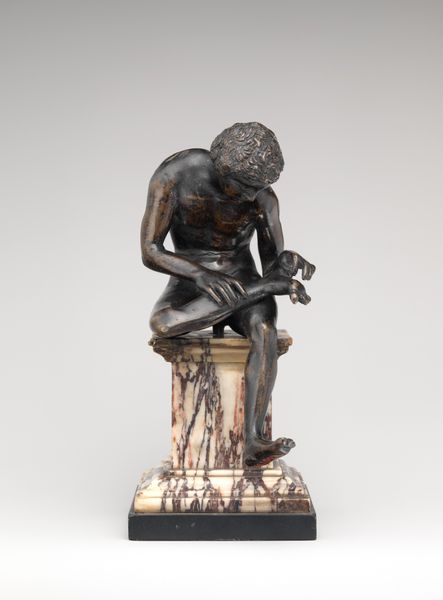
bronze, sculpture
#
portrait
#
baroque
#
sculpture
#
bronze
#
figuration
#
sculpture
Copyright: Rijks Museum: Open Domain
Editor: Here we have François Du Quesnoy’s bronze sculpture, "Christus aan de geselzuil," created before 1709. It's hard to ignore the immense feeling of suffering radiating from the figure. What cultural or psychological ideas are captured in its visual language? Curator: It's remarkable, isn't it? The image of Christ at the pillar, a subject with deep roots in Christian iconography. It becomes more than just a scene from the Passion; it becomes a potent symbol of human suffering, resilience, and spiritual endurance across time. Do you notice the tension in the figure? Editor: Absolutely. The strained muscles, the downcast gaze. It communicates so much through pose alone. I’m interested in what the pillar signifies too, as it's such a central element. Curator: The pillar serves as more than a physical object, its cold, stark verticality contrasting dramatically with the curves and suffering embodied by Christ’s form. Consider the implications. Pillars, structurally, offer support. However, the symbol of the pillar has ties to Roman military customs related to imprisonment. How does Du Quesnoy juxtapose support and bondage? Editor: That’s a strong tension. I see how the figure also echoes classical ideals, almost as if reclaiming an earlier idea of beauty for this painful subject. Curator: Precisely. Du Quesnoy masterfully intertwines classical ideals with Christian narratives, enriching the sculpture's visual and emotional layers. It invites us to consider how visual language, repeated across eras, speaks to the human condition, hope, faith, and memory. Editor: Looking closer, the symbolism opens up so many potential interpretations. Thank you! Curator: Indeed! The image lingers in the mind long after one has seen it.
Comments
No comments
Be the first to comment and join the conversation on the ultimate creative platform.

